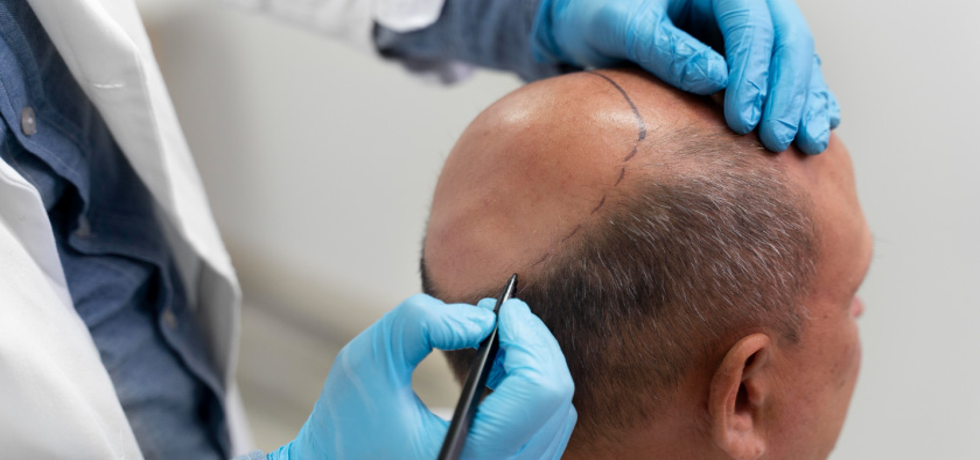
Decoding Hair Transplant: Your Complete Guide
Introduction to Hair Transplantation
Experiencing hair loss can be a challenging journey, affecting not just your appearance but also your confidence. Thankfully, advancements in medical technology have opened up effective options, such as hair transplant procedures. This complete guide will help you decode the various aspects of hair transplant, ensuring you are well-informed about the process, costs, safety, and the techniques available. With the right knowledge, you can make a decision that suits your needs and aspirations.
Understanding Hair Loss
Before diving into hair transplant options, its crucial to understand the root causes of hair fall. Factors can range from genetics and hormonal changes to medical conditions and stress. Identifying the underlying cause is key to addressing the issue comprehensively and considering hair transplant as a viable solution.
Hair Transplant Techniques Explored
1. Follicular Unit Extraction (FUE)
The FUE technique is a popular choice among individuals seeking hair restoration. This method involves harvesting individual hair follicles from a donor area, typically the back of the head. With no scalpel or stitches, FUE minimizes recovery time and reduces scarring, making it a preferred option for many. It’s vital to work with skilled surgeons who specialize in this technique for optimal results.
2. Follicular Unit Transplantation (FUT)
Another common method is FUT, where a strip of scalp tissue with hair is removed and dissected into follicular units. This technique may offer a higher yield of follicles but could leave a linear scar. It’s essential to weigh the pros and cons of both techniques and consult with your surgeon to determine which method is best for you.
Post-Surgical Recovery
Following a hair transplant, adherence to post-operative care is crucial. While most patients return to work within a few days, they should follow care instructions to minimize risks. Swelling and discomfort are common but manageable. Understanding the recovery process can help you maintain a positive outlook as you await results. Remember, the transplanted hair will initially shed, but new growth typically appears over several months.
Long-Term Results and Maintenance
The results from a hair transplant can be life-changing, significantly boosting self-esteem and offering a natural appearance. Its important to have realistic expectations; the full benefits usually manifest within six months to a year. Additionally, regular maintenance of your hair, which may include washing and medicated treatments, is key to sustaining health and appearance in the long run.
Advancements in Hair Transplant Technology
Innovations in hair transplant technology have greatly improved both efficiency and patient satisfaction. Techniques such as robotic-assisted hair transplant surgery help enhance precision, reducing recovery time and associated complications. Staying abreast of such advancements can empower you in making an informed decision regarding your hair restoration journey.
Choosing the Right Clinic and Surgeon
Selecting the right clinic and surgeon is a significant step towards a successful hair transplant. Look out for experience, expertise, and positive patient reviews. A thorough consultation should address your concerns, discuss techniques like FUE or FUT, and ensure youre comfortable with the proposed strategy. Remember, your choice can greatly impact the outcome of your procedure.
Conclusion
Opting for a hair transplant can be a transformative decision that enhances your quality of life. By understanding the nuances of the procedure, including its techniques and care requirements, you can embark on this journey with confidence. Always consult with a recognized specialist in hair restoration to ensure a personalized approach that aligns with your individual needs.
FAQs
Q: Is a hair transplant painful?
Most patients report minimal pain during the procedure due to local anesthesia. Post-surgery discomfort is typically mild and manageable.
Most patients report minimal pain during the procedure due to local anesthesia. Post-surgery discomfort is typically mild and manageable.
Q: Are the results of a hair transplant permanent?
Yes, hair transplants generally provide permanent results. However, ongoing hair loss may continue in other areas, requiring additional treatments.
Q: How long is the recovery time?
Recovery time varies; however, many patients feel ready to return to work within a few days. Newly transplanted hair may shed initially, but natural growth will follow in several months.
For professional assistance and expert advice from leading dermatologists like Dr. Hital Patel, experience the benefits of Decoding Hair Transplant: Your Complete Guide with Hair & Skin Specialist Dr. Hital Patel at The Skin Artistry. Our clinics in PDPU Gandhinagar, Vastrapur Ahmedabad, and Hyderabad (Visiting Consultant) offer top-quality care and personalized treatments. Visit us today to learn more about our services and take advantage of our special offers! For more insights, updates, or to collaborate, stay connected with The Skin Artistry.

